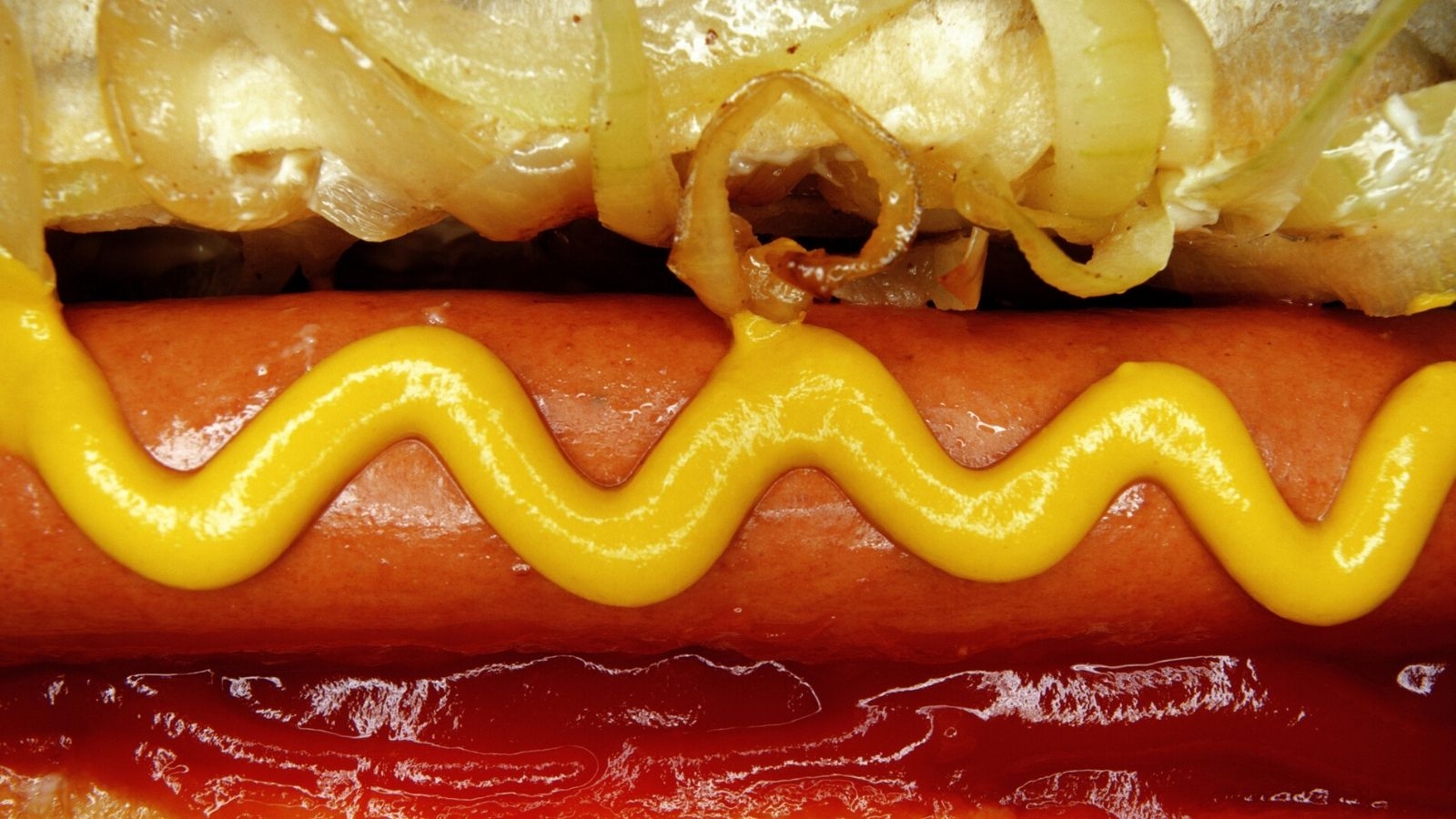This story originally appeared on The Nosher.
American Jewish food is most typically defined as pastrami sandwiches, chocolate babka or bagels and lox. But I am here to argue that the greatest American Jewish food may actually be the humble hot dog. No dish better embodies the totality of the American Jewish experience.
What’s that you say? You didn’t know that hot dogs were a Jewish food? Well, that’s part of the story, too.
Sausages of many varieties have existed since antiquity. The closest relatives of the hot dog are the frankfurter and the wiener, both American terms based on their cities of origin (Frankfurt and Vienna, respectively).
So what differentiates a hot dog from other sausages? The story begins in 19th century New York with two German-Jewish immigrants.
In 1870, Charles Feltman sold Frankfurt-style pork-and-beef sausages out of a pushcart on Coney Island, Brooklyn. Sausages not being the neatest street food, Feltman inserted them into soft buns. This innovative sausage-bun combo grew to be known as a hot dog (though Feltman called them Coney Island Red Hots).
Two years later, Isaac Gellis opened a kosher butcher shop on Manhattan’s Lower East Side. He soon began selling all-beef versions of German-style sausages. Beef hot dogs grew into an all-purpose replacement for pork products in kosher homes, leading to such classic dishes as franks and beans or split pea soup with hot dogs. Though unknown whether Gellis was the originator of this important shift, he certainly became one of the most successful purveyors.
Like American Jews, the hot dog was an immigrant itself that quickly changed and adapted to life in the United States. As American Jewry further integrated into society, the hot dog followed.
In 1916, Polish-Jewish immigrant Nathan Handwerker opened a hot dog stand to compete with Feltman, his former employer. Feltman’s had grown into a large sit-down restaurant, and Handwerker charged half the price by making his eatery a “grab joint.” (The term fast food had yet to be invented, but it was arguably Handwerker who created that ultra-American culinary institution.)
Nathan’s Famous conquered the hot dog world. Like so many of his American Jewish contemporaries, Handwerker succeeded via entrepreneurship and hard work. His innovative marketing stunts included hiring people to eat his hot dogs while dressed as doctors, overcoming public fears about low-quality ingredients. While his all-beef dogs were not made with kosher meat, he called them “kosher-style,” thus underscoring that they contained no horse meat. Gross.
The kosher-style moniker was another American invention. American Jewish history, in part, is the story of a secular populace that embraced Jewish culture while rejecting traditional religious practices. All-beef hot dogs with Ashkenazi-style spicing, yet made from meat that was not traditionally slaughtered or “kosher,” sum up the new Judaism of Handwerker and his contemporaries.
Furthermore, American Jewry came of age alongside the industrial food industry. The hot dog also highlights the explosive growth of the kosher supervision industry (“industrial kashrut”).
Hebrew National began producing hot dogs in 1905. Its production methods met higher standards than were required by law, leading to their famous advertising slogan, “We Answer to a Higher Authority.”
While the majority of Americans may be surprised to hear this, Hebrew National’s self-supervised kosherness actually was not accepted by more stringent Orthodox and even Conservative Jews at the time. But non-Jews, believing kosher dogs were inherently better, became the company’s primary market. Hebrew National eventually received the more established Triangle-K kashrut supervision, convincing the Conservative movement to accept its products. Most Orthodox Jews, however, still don’t accept these hot dogs as kosher.
But over the last quarter of the 20th century in America, the Orthodox community has gained prominence and its opinions, and food preferences, hold more weight in the food industry.
The community’s stricter kashrut demands and sizable purchasing power created a viable market, and glatt kosher hot dogs hit the scene. Abeles & Heymann, in business since 1954, was purchased in 1997 by current owner Seth Leavitt. Meeting the demands of the Orthodox community’s increasingly sophisticated palate, A&H hot dogs are gluten-free with no filler. The company has begun producing a line of uncured sausages and the first glatt hot dogs using collagen casing.
Glatt kosher dogs are now available in nearly 30 sports arenas and stadiums. American Jews have successfully integrated into their society more than any other in history. So, too, the hot dog has transcended its humble New York Jewish immigrant roots to enter the pantheon of true American icons. So when you bite into your hot dog this summer, you are really getting a bite of American Jewish history and the great American Jewish food.
JTA has documented Jewish history in real-time for over a century. Keep our journalism strong by joining us in supporting independent, award-winning reporting.






